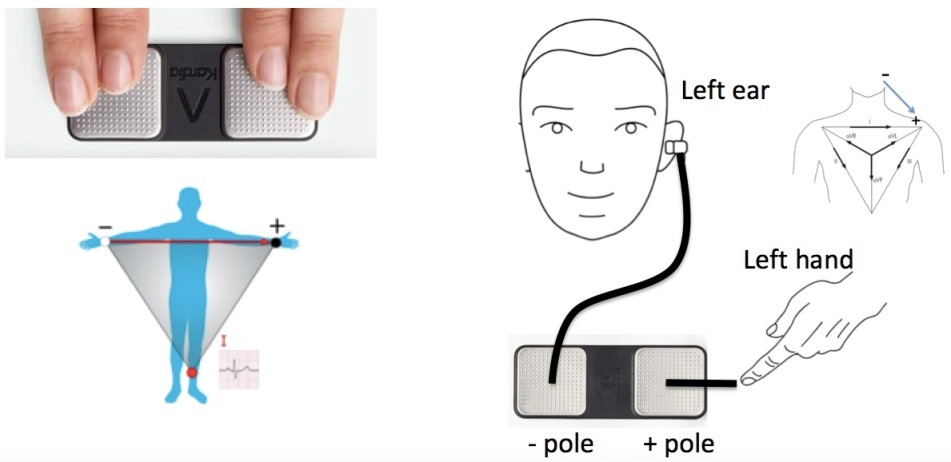Researchers have developed an electrocardiogram (ECG) method which uses signals from the ear and hand to check heart rhythm.

Image: First ECG was performed using standard method and the second test (left photo) was using the new method with the ear and hand. Photo: Courtesy of European Society of Cardiology.
The ECG method, which does not require two hands could be used by drivers, athletes, and the military, was revealed at EHRA 2019, the annual congress of the European Heart Rhythm Association (EHRA) of the European Society of Cardiology (ESC).
Claimed to be the first study to show that the ear can be used by ECG signal detection, the study included 32 consecutive healthy volunteers. An ECG was first performed by the standard method, using the index and middle finger of each hand.
A second ECG was also conducted using the index and the middle finger of the left hand and a clip attached to the left ear.
All the ECGs were printed and analyzed by the device and by two cardiologists who were blinded to which method was used. It is claimed that no differences were detected in the ECG results obtained by the two methods.
Study author Dr Raffaele De Lucia, of the University Hospital of Pisa, Italy, said: “Mobile ECG devices present a major opportunity to detect atrial fibrillation, the most common heart rhythm disorder, and thereby prevent strokes and reduce hospitalisations.
All commercially available portable ECG devices require both hands, but what if symptoms happen while driving?”
Authors of the study stated that the findings pave the way for new kind of single lead ECG wearable device which leaves one hand free, making it easier to use.
In addition, the detection of previously underdiagnosed atrial fibrillation, the device could be used to evaluate physical performance during exercise, prevent fainting and for checking the heart during symptoms including dizziness and breathlessness.
Patients already diagnosed with cardiac conditions such as atrial fibrillation can also use it to monitor their condition.
De Lucia continued saying that: “We have shown how the ear can be used as an innovative anatomical site for ECG signal detection in healthy adults. We are now conducting further studies to validate this method in patients with cardiac arrhythmias.”
